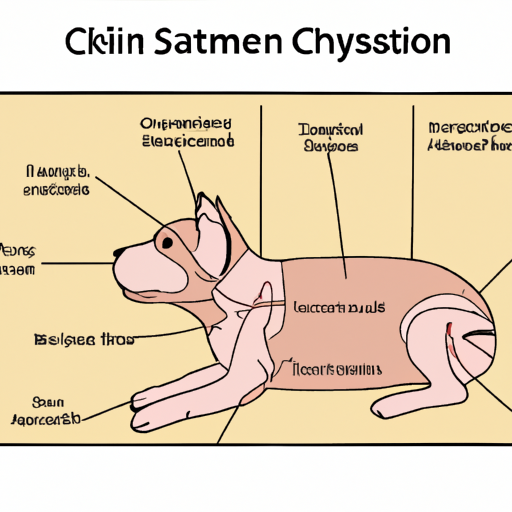As a dedicated pet parent, you might have noticed your canine companion developing small, abnormal growths under their skin. These growths, or cysts, can cause discomfort or distress to your furry friend. This article will delve into the causes of these cysts on dogs, helping you to better understand and manage this condition.
1. Understanding Cysts on Dogs
Cysts are essentially sacs that can be filled with fluid, pus, or other substances. They’re often harmless and may not require treatment unless they grow large, become infected, or cause discomfort to your pet. Cysts can appear anywhere on a dog’s body and can vary significantly in size.
2. Common Causes of Cysts
Cysts in dogs can be caused by several factors, including:
- Hormonal imbalance: This can lead to the overproduction of sebum, a skin oil, resulting in sebaceous cysts.
- Injury or trauma: Damaged hair follicles can lead to the formation of cysts.
- Infections: Bacterial or fungal infections can cause cysts.
- Parasites: Certain parasites like mites can cause cysts.
| Cause | Type of Cyst |
|---|---|
| Hormonal imbalance | Sebaceous cysts |
| Injury or trauma | Follicular cysts |
| Infections | Infectious cysts |
| Parasites | Parasitic cysts |
3. Recognizing the Symptoms
Cysts can be challenging to identify without a professional diagnosis, but certain signs can hint at their presence. These include:
- Swelling or lumps under the skin
- Redness or inflammation
- Discharge from the cyst
- Hair loss around the cyst
- Discomfort or pain when the cyst is touched
4. How to Handle a Cyst
If you suspect your dog has a cyst, it’s essential to consult with a vet. Never attempt to drain or remove a cyst at home, as it could lead to infection or other complications. Your vet can determine the best course of action, which may include monitoring the cyst, draining it, or surgically removing it.
5. Preventing Cysts
While it’s not always possible to prevent cysts, you can take steps to reduce your dog’s risk:
- Maintain a healthy diet: This can help regulate hormones and reduce the risk of sebaceous cysts.
- Keep your dog’s skin clean: Regular grooming can prevent infections that may lead to cysts.
- Regular vet check-ups: Routine examinations can catch cysts early before they become a problem.
FAQs
Q: Can I pop my dog’s cyst at home?
A: No. This can lead to infection or other complications. Always consult with a vet.
Q: Are cysts painful for dogs?
A: Some cysts may cause discomfort, especially if they’re large or infected. However, many cysts are painless.
Q: Can cysts lead to cancer?
A: Most cysts are benign and not cancerous. However, it’s essential to get any lump checked by a vet to rule out serious conditions.
In Conclusion
Cysts on dogs can be concerning, but understanding their causes, symptoms, and treatments can help you provide the best care for your furry friend. As always, if you’re in doubt, reach out to a vet for professional advice.



